
Modeling is an art, and it takes practice. The following examples show the variety of problems that can be attacked by linear programming, and give you the opportunity to try your hand at some problems.

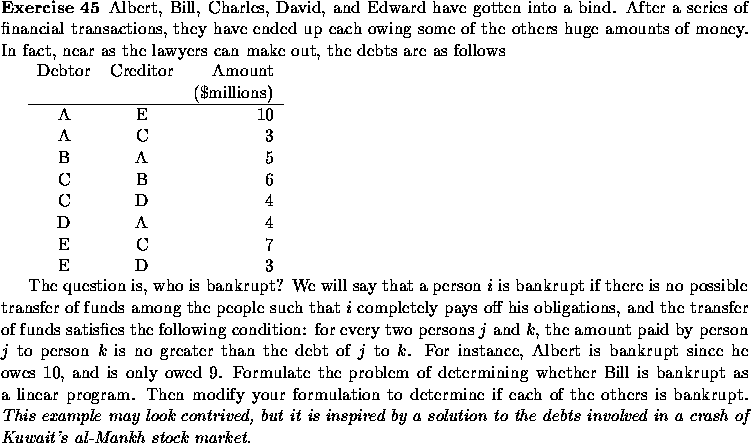
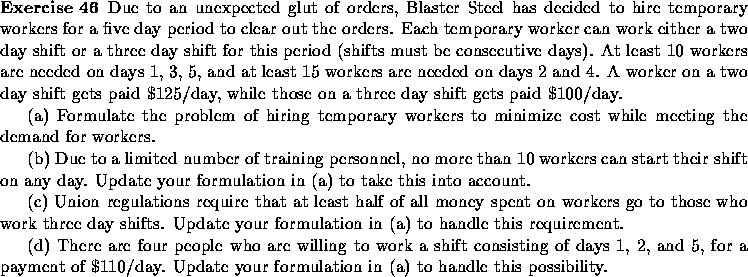

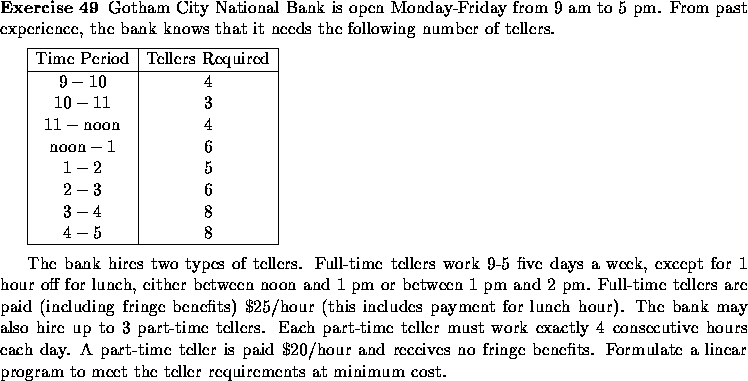
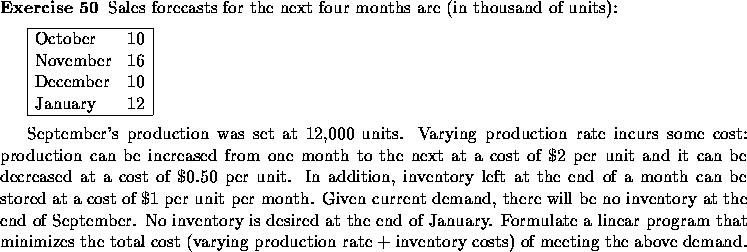
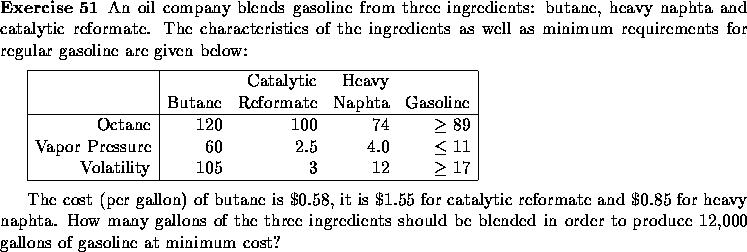

Answers to Exercise 61:
(a) Let ![]() be the number of toasters produced manually,
be the number of toasters produced manually, ![]() be
the number produced semiautomatically, and
be
the number produced semiautomatically, and ![]() be the number
produced robotically.
be the number
produced robotically.
The objective is to Minimize ![]() .
.
The constraints are:
![]() (produce enough toasters)
(produce enough toasters)
![]() (skilled labor used less than or equal to
amount available).
(skilled labor used less than or equal to
amount available).
![]() (unskilled labor constraint)
(unskilled labor constraint)
![]() (assembly time constraint)
(assembly time constraint)
![]() (nonnegativity of production)
(nonnegativity of production)
(b)
Add a constraint ![]()
(c)
Add a variable ![]() to represent the assembly time slack. Add
to represent the assembly time slack. Add
![]() to the objective. Change the assembly time constraint to
to the objective. Change the assembly time constraint to
![]() (assembly time constraint)
(assembly time constraint)
![]()